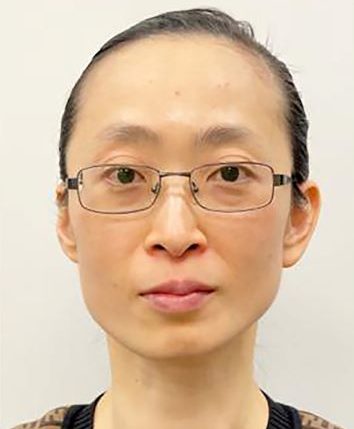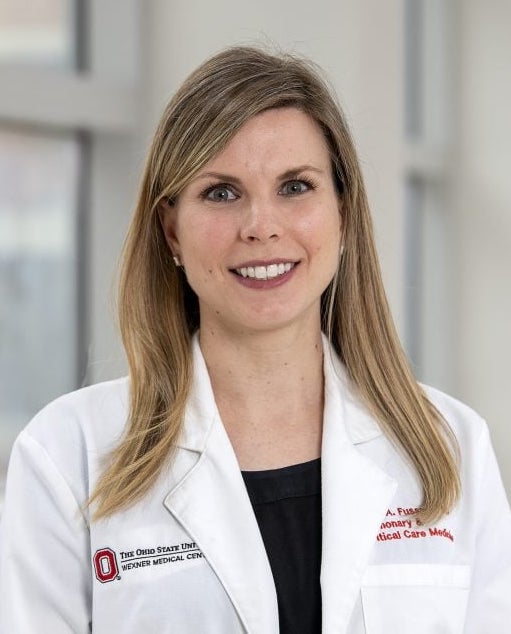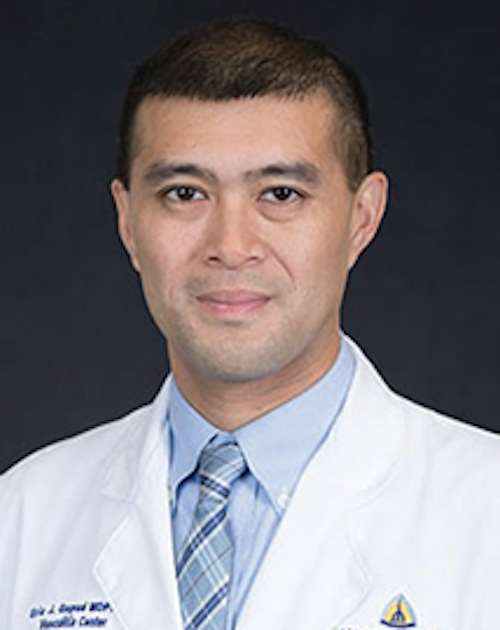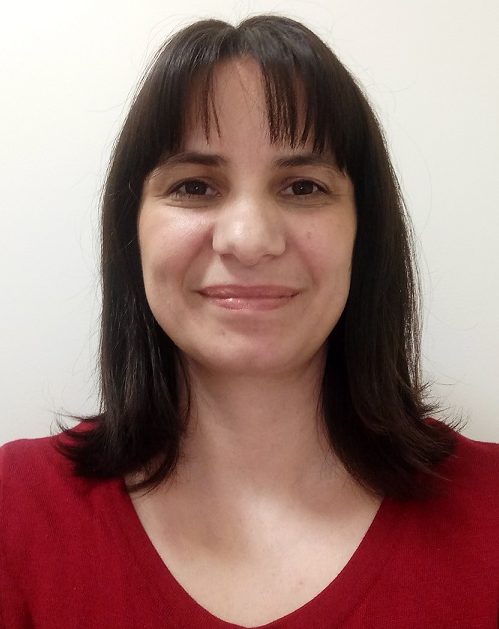Our Researchers
Vasculitis Researchers
The more we learn about vasculitis, the more effectively we can manage and treat it. Meet our researchers and find out more about the research work they are doing that is bringing us closer to a cure

 Maria C. Cid, MD
Maria C. Cid, MD
HOSPITAL CLÍNIC, INSTITUTE OF BIOMEDICAL RESEARCH, BARCELONA, SPAIN
Study Title: “Effects of blocking IL-6 receptor with tocilizumab on ex vivo cultured arteries from patients with giant-cell arteritis. Searching for predictors of response.”
Investigator: Maria C. Cid, MD
Co-investigators: Marc Corbera-Bellalta, post-doctoral researcher (R2A); Nekane Terrades-García, post-doctoral researcher (R2A); Georgina Espígol-Frigolé, associate professor; Sergio Prieto-González, associate professor; Javier Marco-Hernández, pre-doctoral researcher (R1)
Institution: Hospital Clínic, Institute of Biomedical Research, Barcelona, Spain
Award: $48,000
Giant cell arteritis (GCA) is a relapsing form of vasculitis involving the large arteries, which can potentially cause disabling or life-threatening complications such as blindness, stroke or rupture of the body’s largest artery—the aorta.
GCA is usually treated with steroids, which can rapidly relieve symptoms and prevent blindness. However, most patients require long-term treatment because symptoms often return when steroids are tapered or discontinued. Steroids produce many side effects, and for decades, they have been the main treatment available for GCA.
Recently, a medication called tocilizumab (TCZ) has been shown to allow a rapid reduction of steroids in GCA patients, and maintain patients to be symptom-free. While researchers, physicians and patients are encouraged to have a new treatment that efficiently reduces steroid exposure, experience with TCZ is still limited. Vasculitis Foundation grant recipient Maria C. Cid, MD, hopes to shed more light on TCZ through her study, “Effects of blocking IL-6 receptor with tocilizumab on ex vivo cultured arteries from patients with giant-cell arteritis. Searching for predictors of response.” Through a $48,000, one-year research grant, Dr. Cid and her research team will investigate the effects of TCZ on vascular inflammatory lesions and try to identify predictors of patient response to the drug.
Lead Investigator Dr. Cid is senior consultant at the Department of Autoimmune Diseases (Vasculitis Research Unit), Hospital Clínic, Institute of Biomedical Research, Barcelona, Spain, and Associate Professor at the University of Barcelona. Her co-investigators in Barcelona include: Marc Corbera-Bellalta and Nekane Terrades-García, post-doctoral investigators at the Institute of Biomedical Research; Georgina Espígol-Frigolé and Sergio Prieto-González, associate professors at the Department of Autoimmune Diseases; and Javier Marco-Hernández, 4th year Internal Medicine resident, Hospital Clínic.
TCZ blocks the function of the interleukin-6 (IL-6) molecule, which produces fever, weight loss, fatigue and inflammatory pain as well as the general feeling of illness that accompanies many conditions. However, in a large clinical trial, about 40 percent of patients suffered disease flareups while on TCZ, suggesting that some patients received little or no benefit from the therapy. Although TCZ is generally well-tolerated, it produces some side effects and is costly. Long-term risk versus benefit of the drug is still unknown.
“Identifying predictors of response to tocilizumab is crucial to avoid exposing patients to treatments of limited efficacy with the potential harm of persistent disease activity,” says Dr. Cid. “And the effects of tocilizumab on vascular inflammation have not been investigated.”
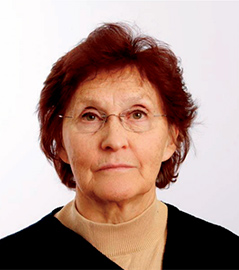 Solbritt Rantapää Dahlqvist, MD, PhD
Solbritt Rantapää Dahlqvist, MD, PhD
UMEÅ UNIVERSITY, UMEÅ, SWEDEN
Study Title: “Analyses of antibodies, biomarkers and microbiome in relation to genetic markers in pre-clinical individuals developing antineutrophil cytoplasmic antibody associated vasculitis.”
Investigator: Solbritt Rantapää Dahlqvist, MD, PhD
Co-investigators: Ewa Berglin, MD, PhD; Johanna Dahlqvist, MD, PhD; Ingegerd Johansson, DDS, PhD; Linda Johansson, PhD
Institution: Umeå University, Umeå, Sweden
Award: $100,000
ANCA-associated vasculitis (AAV) is a group of diseases involving small blood vessels with chronic inflammation in different locations throughout the body. AAV (antineutrophil cytoplasmic antibody) diseases include granulomatosis with polyangiitis, eosinophilic granulomatosis with polyangiitis, and microscopic polyangiitis. These diseases are rare but severe—even potentially life-threatening.
The underlying cause and progression of chronic inflammation in AAV is not fully understood, but it is considered an autoimmune response, which occurs when the body’s natural defense system mistakenly attacks healthy tissues. In the case of AAV, the antibodies PR3 or MPO attack the individual’s own proteins. Some genetic factors are related to these diseases, and bacterial infections may play a role, however more study is needed.
Solbritt Rantapää Dahlqvist, MD, PhD, of Sweden hopes to learn more about the development of disease progression that leads to AAV in a new study funded by the Vasculitis Foundation. She recently received a two-year, $100,000 research grant from the VF for her study, “Analyses of antibodies, biomarkers and microbiome in relation to genetic markers in pre-clinical individuals developing antineutrophil cytoplasmic antibody associated vasculitis.”
Dr. Dahlqvist, principal investigator of the study, is Professor of Rheumatology at the Department of Public Health and Clinical Medicine, Division of Rheumatology, at Umeå University, Umeå, Sweden. Her co-investigators are: Ewa Berglin, MD, PhD, Johanna Dahlqvist, MD, PhD, Ingegerd Johansson, DDS, PhD, and Linda Johansson, PhD.
“In this study, we will investigate the underlying mechanisms and processes leading to AAV,” says Dr. Dahlqvist. Disease progression will be analyzed using blood serum samples donated to Swedish national registers and biobanks by individuals before they had developed any symptoms of AAV.
The researchers will then analyze the samples for the presence and levels of autoantibodies; antibodies against a panel of bacteria; proteins in blood as a sign of inflammation, and also potential genetic material (DNA) from bacteria. The results from the analyses will be compared with corresponding results from control subjects sampled at the same time and biobank, but without development of AAV.
“As most patients who are affected with AAV in Sweden have already participated in a genetic project, we will have access to genetic background data enabling evaluation of contribution to autoantibodies, protein profiles and bacterial antibodies in the disease developmental process,” Dr. Dahlqvist explains.
“This study will bring forward a unique possibility to increase knowledge about the development and progression in the early phases of AAV exhibiting possible early targets for new treatments.”
 Dan Jane-Wit, MD, PhD
Dan Jane-Wit, MD, PhD
YALE UNIVERSITY
Title: Endothelial Cell Inflammasomes in ANCA-Associated Vasculitis
Investigator: Dan Jane-Wit, MD, PhD
Co-investigator: Caodi Fang, MS
Institution: Yale University
Award: $25,000 for the first year; $25,000 for the second year
ANCA-associated vasculopathy (AAV) are inflammatory disorders that include Wegener’s granulomatosis, microscopic polyangitis, and Churg-Strauss disease. These conditions are characterized by chronic inflammation leading to blockages of blood vessels and diminished blood flow to vital organs like the kidney. How inflammation causes these blockages to form is unknown.
In this proposal, we will study how interactions between two immune mechanisms, complement and CD4+ T cells, lead to blockages in blood vessels in AAV. Complement are immune proteins that circulate in the blood. During AAV, complement proteins are activated and self-assemble to form membrane attack complexes (MAC). MAC are pore-like structures that insert into the cell membranes of endothelial cells (EC), the cells that line blood vessels. When this occurs, we found that MAC causes EC to release IL-1beta, a secreted protein that enhances the activation of CD4+ T cells. IL-1beta enhanced activation of CD4+ T cells that went on to release a factor called IFN-gamma that led to blood vessel blockages. Thus, MAC deposition on EC led to EC release of IL-1beta which then enhanced activation of CD4+ T cells that released IFN-gamma to cause blood vessel blockages in AAV.
Using human biospecimens to increase the likelihood that our findings will be relevant to patients, we will study how a protein structure called the inflammasome is activated by MAC on EC to allow IL-1beta secretion. We will then examine the significance of the inflammasome in human coronary arteries in a humanized mouse model, and we will further test the clinical relevance of the inflammasome by analyzing its expression in AAV patient tissues. Our studies will lead to novel insights into how AAV causes blood vessel blockages and may lead to new therapies to prevent this from occurring.
 Sonia Sharma, PhD
Sonia Sharma, PhD
LA JOLLA INSTITUTE FOR ALLERGY AND IMMUNOLOGY, CALIFORNIA
Study Title: Metabolic dysregulation of pro-inflammatory responses in DADA2 vasculitis
Investigator: Sonia Sharma, PhD
Co-investigators: Rekha Dhanwani, PhD; Mohit Jain, MD, PhD
Institution: La Jolla Institute for Allergy and Immunology, California
Award: $50,000 one-year
Vasculitis is an auto-immune condition characterized by inflammation and damage to the blood vessels, which precipitates multi-organ damage due to restricted blood flow to affected tissues. Many vasculitis diseases are rare genetic syndromes, and unraveling the biological basis of these debilllitating condition is absolutely critical for developing effective therapeutic treatments. Understanding vascular inflammation is also broadly useful for understanding chronic inflammatory conditions where vasculitis is often a key clinical complication. Our lab recently generated data showing that the metabolic enzyme Adenosine Deaminase 2 (ADA2), which is
mutated in DADA2 vasculitis, directly controls inflammatory immune responses. Our studies provide an important new link between vaascultiis and pro-inflammatory immune responses, and would also be the first to establish vascular inflammation as a metabolic disorder. By exploiting this new-found knowledge, we aim to explore new treatments for vascular inflammation aimed at dampening pro-inflammatory immune responses in DADA2 and other similar vasculitis syndromes by correcting the metabolic defect caused by low ADA2 activity.
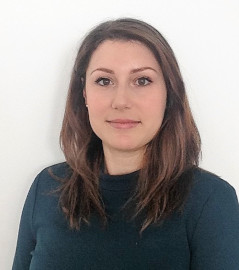 Laura Moi, MD
Laura Moi, MD
AN INTERNATIONAL INCEPTION COHORT STUDY BY THE EUROPEAN VASCULITIS SOCIETY (EUVAS)
Co-Investigators: EUVAS Council: Ingeborg Bajema, MD, Mikkel Fauschou, MD, PhD, Thomas Hauser, MD, Peter Hoglund, MD, PhD, David Jayne, MD, Alfred Mahr, MD, MPH, PhD, Laura Moi, MD, Raashid Luqmani, DM FRCP, (E) and Kerstin Westman, MD
Title: Long Term Patient Follow-up of ANCA-associated Vasculitis, An International Inception Cohort Study by the European Vasculitis Society (EUVAS)
Award: $62,000 one-year
There is a paucity of information on the long term outcome of patients with ANCA associated vasculitis (AAV) and factors predictive for adverse outcomes. The European Vasculitis Society (EUVAS) has conducted nine randomized controlled trials in AAV recruiting over 900 patients from diagnosis between 1995 and 2010.
In 2007, EUVAS examined five-year follow-up of 500 patients and reported on mortality, malignancy, cardiovascular events, safety, relapse and renal outcomes. Up-to-date data on 85% of the original cohorts was obtained. This data has helped shape current attitudes to AAV but further study is now required to assess change with more recent studies and longer term follow-up of older studies. Exemplar topics relevant to current practice include the cancer risks associated with cyclophosphamide, the impact of relapse on damage accrual and health related quality of life.
There is limited data regarding long term outcomes in forms of ANCA-associated vasculitis and factors that prevent adverse outcomes. These researchers are developing a large database using the information collected as part of ANCA trials from 1995 to 2010. The team is examining factors such as survival, long term kidney function, co-morbidities, relapse status, vasculitis-related damage, drug exposure, mortality, cancer rates, cardiovascular events, drug safety, relapse rate and other kidney-related outcomes.
Dr. Laura Moi, a fellow supported by the grant and a member of the EUVAS Council, will manage the project.
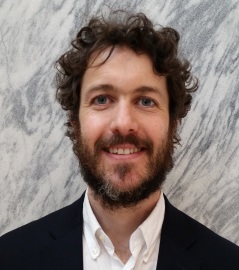
Divi Cornec, MD, PhD
MAYO CLINIC, ROCHESTER AND BREST UNIVERSITY, FRANCE
Co-investigators: Ulrich Specks, MD and Pers Jacques-Olivier, PhD
Institution: Mayo Clinic, Rochester and Brest University, France
Title: In Depth Characterization of PR3-specific B Cells in ANCA-associated Vasculitis
Award: $100,000 two-year grant
Divi Cornec is a French rheumatologist, currently working at the Mayo Clinic as a Research Fellow with Ulrich Specks, in collaboration with Jacques-Olivier Pers, head of the Immunology research team U1227 in Brest, France.Since the pivotal RAVE study co-directed by Dr Specks, rituximab has become the cornerstone of the treatment of many patients with ANCA-associated vasculitis. Rituximab acts by destroying a certain type of white blood cells called “B cells”, which are responsible for the production of our antibodies. Most B cells in the blood of patients with auto-immune diseases are normal, and secrete “good” antibodies (that protect against infections for example), and only a minority of their B cells are abnormal and make the autoantibodies (the ANCAs) that are associated with the disease and may cause the damage to different organs. Until now, very little is known about the differences between normal protective B cells and abnormal ANCA-producing B cells.
What this means for patients
The authors recently developed a method to recognize these ANCA-producing B cells among all other normal B cells in the blood of the patients. This method is a very promising tool. The main objective of the present research project is to determine whether the proportion of ANCA producing (PR3-specific) B cells in the blood of the patients is associated with disease activity and could predict the risk of relapse.If this is the case, this test could be very useful to guide treatment for each individual patient, in order to avoid unnecessary immunosuppressive therapy in some patients while preventing disease relapses in patients at risk.
Watch an interview with Dr. Cornec and Ben Wilson.
 Mary H. Foster, MD
Mary H. Foster, MD
NEPHROLOGY, DUKE UNIVERSITY
Co-investigators: Amy Clark, PhD, Robert Tighe, MD
Institution: Nephrology, Duke University
Title: Dual Humanization to Model Gene-environment Interactions in ANCA Vasculitis
Award: One-year, $49,946
A type of protein called anti-neutrophil cytoplasmic antibody, or ANCA, is produced in patients with ANCA-associated vasculitis. Genes and environmental exposures are believed to contribute to ANCA formation, although the mechanisms are unknown. ANCAs cause destruction of kidneys, lungs, and other organs in affected patients. Disease frequently recurs after treatment is stopped, such that it is often continued for months or years. Current drugs are very toxic, so there is an urgent need for better therapies. Studies to find and test new drugs require animal models faithful to the human disease.Optimal models of ANCA vasculitis do not exist. The goal of this project is to develop a new humanized model, using a special type of mouse that expresses both a human vasculitis susceptibility gene and a human immune system including human T cells and B cells that make ANCA. The researchers predict that immunized silica exposed humanized mice will develop human ANCA and disease similar to that found in patients, thus providing an important new model for the vasculitis research community to study disease mechanisms.
What this means for patients
Should the research team be successful in developing the new model, this would be the first model available to allow for further research on new therapeutic agents that can arrest the disease and prevent relapse.
Watch an interview with Dr. Foster and Ben Wilson.
 Mark Gorelik, MD
Mark Gorelik, MD
PEDIATRIC RHEUMATOLOGY, BAYLOR COLLEGE OF MEDICINE
Investigator: Mark Gorelik, MD
Co-investigator: Stephanie Davis, MS
Institution: Pediatric Rheumatology, Baylor College of Medicine
Title: Follistatin-Like-1 Protein Blockade in Kawasaki Disease
Award: One-year, $25,000
Dr. Mark Gorelik and co-investigator, Dr. Stephanie Davis, were awarded a one-year grant to study the role of the Follistatin-like-1 molecule in the formation of coronary aneurysms and development of inflammation in children with Kawasaki disease. The leading cause of morbidity and mortality in children with Kawasaki is from coronary inflammation.
Kawasaki disease is an illness that strikes children between the ages of six months and six years. Although the acute phase of the illness is transient, the aftereffects can be devastating. Up to one fifth of all patients with Kawasaki may develop aneurysms in the blood vessels of the heart, specifically the coronary arteries, and can become permanent despite the best current treatment. In many cases, the aneurysms require life-long therapy to prevent outcomes such as blood clots and heart attacks. Many patients experience complications from the damage of this disease at some point in their lives.
What this means for patients
Researchers have found that a particular molecule ‘Follistatin-like-1’ is elevated in the blood of children with Kawasaki who develop these aneurysms. This molecule plays a major role in the development of chronic changes in organs targeted by chronic inflammation, such as the joints in arthritis and the lungs in asthma. The researchers hypothesize that Follistatin-like-1 molecules may play a similar role in the chronic changes that occur in the heart after the initial inflammation of Kawasaki disease.
Drs. Gorelik and Davis will use a mouse model of Kawasaki disease to block the Follistatin-like-1 gene. The researchers hope to show that inhibiting the function of this molecule in Kawasaki significantly reduces the development of aneurysms. This could open the door to additional ways to target aneurysm formation in this disease, potentially giving a way to treat this intractable complication of Kawasaki. Success in this area will further our pathophysiologic understanding of Kawasaki and hopefully allow the development of targeted therapies.
Watch an interview with Dr. Gorelik and Ben Wilson.
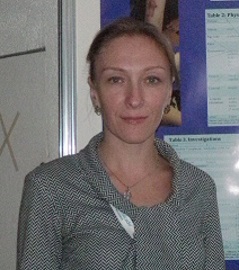 Nataliya Milman, MD, FRCPC, MSC
Nataliya Milman, MD, FRCPC, MSC
RHEUMATOLOGY, OTTAWA HOSPITAL RESEARCH INSTITUTE
Investigator: Nataliya Milman, MD, FRCPC, MSC
Co-investigators: Peter Merkel, MD, Annelies Boonen, MD, Peter Tugwel, MD George A. Wells, MD, Paula Patterson, MD
Institution: Rheumatology, Ottawa Hospital Research Institute
Title: ICF Core Sets for ANCA-associated Vasculitis
Award: Two-year, $20,000
In 2010 OMERACT developed a list of outcomes for measurement in clinical trials of ANCA-associated vasculitis (AAV), called the “AAV Core Set”. Since then the recommended procedure for selection of the core set has been updated, most importantly by encouraging that groups of individuals that are affected by the clinical trials take part in the process of outcome selection. Three preliminary studies were done to identify aspects of AAV: 1) studied in clinical trials, 2) considered important by patients, and 3) considered important by vasculitis experts.
The new study represents the final step of development of the updated ICF-based AAV Core Set. A three-round questionnaire will be administered to several groups of individuals, including 1) patients and caregivers, 2) clinicians, and 3) researchers, industry representatives and policy makers.
In the first questionnaire round participants will be shown the results of the preliminary studies and asked to select aspects of AAV they consider the most important to measure in clinical trials. In the second and third questionnaire rounds, participants will be shown the results of previous rounds and asked to repeat their selection. Aspects of AAV selected by at least 70% of participants in any of the three groups described above will be included in the ICF-based AAV Core Set.
What this means for patients
Adapting the updated core set should result in expanding outcome measurement in AAV-related clinical trials and capturing aspects of AAV that may be uniquely important to patients and other relevant groups.
 Prof. dr. Peter Heeringa
Prof. dr. Peter Heeringa
DEPARTMENT OF PATHOLOGY AND MEDICAL BIOLOGY, VASCULITIS EXPERTISE CENTER, UNIVERSITY MEDICAL CENTER, GRONINGEN, NETHERLANDS
Institution: Department of Pathology and Medical Biology, Vasculitis Expertise Center, University Medical Center, Groningen, Netherlands
Title: Analysis of glycosylation of Proteinase 3-ANCA IgG variable domains
Award: $49,500, one-year
ANCA associated vasculitides (AAV) are severe diseases that result from attack by one’s own immune system (autoimmune disease). This is caused by circulating proteins (autoantibodies) produced by cells from the immune system that target and activate white blood cells causing inflammation in small blood vessels throughout the body.
The research proposed in this project will study the autoantibodies that cause the inflammation. Antibody proteins are coated with sugars, the extent and composition of which determines their
function. In this project we hypothesize that the autoantibodies in AAV differ from “normal” antibodies with respect to the amount of sugar groups attached and therefore impacts their function. To this end, we will isolate the autoantibodies from patient’s blood and characterize in detail the extent and composition of the sugar coating. We expect this research will inform efforts to refine laboratory tests for AAV diagnosis and patient monitoring and, in the future, reveal whether interfering with the sugar coating of autoantibodies can be used for therapeutic applications.
Watch an interview with Dr. Heeringa and Ben Wilson.
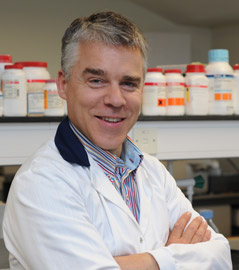 Professor Mark Little
Professor Mark Little
TRINITY HEALTH KIDNEY CENTRE, NEPHROLOGY, RENAL INFLAMMATION GROUP, ST. JAMES HOSPITAL, DUBLIN, IRELAND
Institution: Trinity Health Kidney Centre, Nephrology, Renal Inflammation Group, St. James Hospital, Dublin, Ireland
Title: Rational treatment of glomerulonephritis using a novel urine biomarker
Award: $49,294, one-year
This project is focused on development of a new biomarker test in the diagnosis and monitoring of crescentic glomerulonephritis (CGN), a severe form of inflammatory kidney injury. This test relies upon identification of a single protein in the urine: soluble CD163. This is shed from activated white blood cells within the kidney, which are in direct communication with the urine. We have discovered that the level rises when kidney vasculitis is active, and is not elevated in other causes of kidney disease. Therefore, it is highly specific for CGN.
We aim to track urinary sCD163 during the first few months of treatment for CGN to investigate its usefulness as a biomarker to help us decide when to switch to less intensive maintenance treatment. This will be achieved by engagement with three clinical research facilities in the Dublin area and the recruitment of 40 patients, who will be sampled 7-12 times over the year following commencement of therapy.
Most current biomarker programmes rely upon panels of compounds. We have discovered a single protein that closely mirrors CGN, which has the potential to provide a guide for clinicians as to when to discontinue potentially toxic induction therapy. The current project will bring this closer to a point of care test that will improve the care of patients with vasculitic disorders.
Watch an interview with Dr. Little and Ben Wilson.

Robert Micheletti, MD, Assistant Professor
DERMATOLOGY AND MEDICINE, UNIVERSITY OF PENNSYLVANIA, PHILADELPHIA, PENNSYLVANIA
Institution: Dermatology and Medicine, University of Pennsylvania, Philadelphia, Pennsylvania
Title: A randomized multicenter study for isolated skin vasculitis (ARAMIS)
Award: $50,479, one-year
Vasculitis is a rare disease that damages blood vessels. When it affects the skin, it causes multiple burning or itchy purple spots which can become painful ulcers or become infected. For patients who get such lesions recurrently, vasculitis of the skin can be debilitating.
Unfortunately, we do not know what medications work best for this condition. There have not been any studies which address this question adequately. Therefore, doctors often try various medications at different doses before hitting on an effective regimen.
ARAMIS is a trial specifically for chronic, recurrent skin vasculitis which will test three medications—dapsone, colchicine, and azathioprine—used commonly but never proven to work for that condition. Patients will receive one of the three medications titrated to a goal dose and duration designed to evaluate its effectiveness. If the medication does not help after 3-6 months, patients will be switched to one of the other two medications, and the process will be repeated. The primary end point will be significant improvement or complete resolution of skin vasculitis after six (6) months on a particular medication.
The results from these two study stages will be combined to determine which medication is best at decreasing skin lesions and improving patient symptoms. If the study is successful, doctors will for the first time have high-quality scientific evidence to guide how they treat skin vasculitis.
Because skin vasculitis is uncommon and understudied, it truly represents an area of unmet need. With the administrative support of the Vasculitis Clinical Research Consortium (VCRC), we have assembled a multicenter, interdisciplinary team of collaborating rheumatologists and dermatologists to help answer this question, without whom this work would not be possible.
Watch an interview with Dr. Micheletti and Ben Wilson.
 Jonathan Choy, PhD
Jonathan Choy, PhD
SIMON FRASER UNIVERSITY, BURNABY, BRITISH COLUMBIA, CANADA
Study: Immune regulation by IL-6 in Giant cell arteritis
Institution: Simon Fraser University, Burnaby, British Columbia Canada
Award: $50,000, one-year grant
Summary: Giant cell arteritis (GCA) is vascular disease that is characterized by thickening of the artery wall, resulting in a block in blood flow. It most often affects the temporal artery that provides blood to parts of the head is a challenging cause of blindness and stroke in the elderly. Targeting of arteries by cells of the immune system causes GCA. More specifically, T cells are specialized cells of the immune system that play a key role in the development of GCA.
The activation of T cell responses depends on the cytokine IL-6. IL-6 levels are increased in GCA and a clinical trial has recently begun to investigate the effect of blocking IL-6 activity on the development of GCA. However, the way in which IL-6 activates T cell responses in GCA is poorly understood.
We will study the potential mechanisms by which IL-6 affects immune responses in GCA by examining the relationship between IL-6 expression levels and features of T cell responses that are improperly controlled during the development of immune-mediated diseases.
The potential identification of correlations between IL-6 levels and altered properties of T cells will provide insight into how IL-6 alters immune function in GCA and will form the basis for future studies that specifically inhibit the activity of IL-6 in patients. Our studies will have implications for the management of GCA.
Watch an interview with Dr. Choy and Ben Wilson.
 Susan Jick, DSc
Susan Jick, DSc
BOSTON UNIVERSITY SCHOOL OF PUBLIC HEALTH, BOSTON, MASSACHUSETTS
Study: Longitudinal study of morbidity and mortality in vasculitis patients
Institution: Boston Collaborative Drug Surveillance Program, Boston University School of Public Health, Boston, Massachusetts
Award: $98,641, two-year study
Summary: Vasculitis is an inflammation of blood vessels which is mistakenly thought to be an attack by the immune system. It can affect any of the body’s blood vessels and be fatal if left untreated. Most of the vasculitic syndromes respond well to steroid drugs, such as prednisolone, though some may also require treatment with an immunosuppressive drug, such as cyclophosphamide. Despite this, vasculitis can still lead to organ damage or even death from its effect on blood vessels, flares (new symptoms develop), and treatment side effects. Thus, reducing risk of undesired outcomes or death in patients living with vasculitis becomes an important treatment goal.
This project will use the UK-based Clinical Practice Research Datalink, which provides de-identified electronic health data for a large primary care population, to identify a vasculitis population (including patients with giant cell arteritis, granulomatosis with polyangiitis, and Polyarteritis nodosa) and a non-vasculitis population with similar age and sex distribution. Then differences in health conditions including heart disease, stroke, diabetes, high cholesterol, high blood pressure, obesity, cancer, etc., will be compared between the vasculitis and non-vasculitis populations.
In addition, the timing of these health conditions in relation to the date of the first vasculitis diagnosis will be investigated to separate those that were present before vasculitis and those that developed post-diagnosis. This project will also estimate the rates of death at 1, 3, 5 and 10 years of follow-up after the first vasculitis diagnosis and compare them to the corresponding rates in the non-vasculitis population. All analyses above will also be conducted in different subgroups of age, sex and type of vasculitis. Finally this project will identify potential risk factors for death using a survival analysis. This study will improve our understanding of vasculitis-related health problems and lead to better treatment.
Biography
Dr. Susan Jick has been in the field of pharmacoepidemiology for over 25 years working with the Boston Collaborative Drug Surveillance Program where she has conducted research in many areas of drug safety. She has been involved with the use and development of large automated databases including the General Practice Research Database which has become a major resource for conducting drug safety studies and has changed the way these studies are being conducted today. Her research activities range from the safety of drugs such as oral contraceptives in relation to venous thrombosis, hormone replacement therapy in relation to cancers, antibiotics in relation to various serious health outcomes, and statins in relation to autoimmune diseases and diabetes, to safety of drug use in the first trimester of pregnancy and use of folic acid to prevent neural tube defects. Dr Jick helps to run a workshop on methods in conducting drug safety studies that is held each year, she teaches the drug epidemiology class at BUSPH and she serves as an advisor to doctoral students in epidemiology.
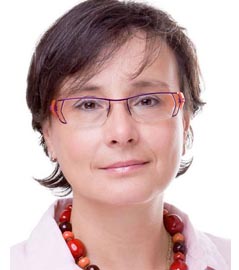 Renate Kain, MD, PhD
Renate Kain, MD, PhD
MEDICAL UNIVERSITY OF VIENNA, AUSTRIA
Study: Role of LAMP-2 in tolerance to ANCA antigens
Institution: Medical University of Vienna, Vienna, Austria
Award: $50,000, one-year study
Summary: Despite recent advances in treatment, ANCA-associated vasculitis (AAV) still causes serious morbidity especially after the acute injury has been controlled, emphasizing the need for better ways to monitor disease activity and personalize immunosuppressive therapy. It was thought that antibodies to the classical ANCA targets would be ideal biomarkers, myeloperoxidase (MPO) and proteinase-3 (PR3), because of the overwhelming evidence that they cause injury.
Surprisingly, this is not the case and they correlate badly with disease activity, suggesting either that current assays don’t measure the damaging antibodies or that additional factors are required for injury. We identified autoantibodies to a protein called LAMP-2 as a potential missing link because they are found together with antibodies to MPO or PR3 in 80-90% of individuals with active AAV. Much of our research is designed to find out why these two types of autoantibody are found so commonly together in AAV.
LAMP-2 is located both in lysosomes inside the cell and on the cell surface and is important for presenting antigens to the T cells that initiate immune responses. We showed recently that LAMP-2 acts as a receptor on the surface of human antigen presenting cells that facilitates internalization of molecules and their targeting to the compartment where antigens are loaded onto the molecules that present them to T cells.
We now propose to use novel techniques to fluorescently label LAMP-2 and so provide a unique opportunity to discover whether it also promotes uptake of MPO and PR3 by antigen presenting cells before transporting them into the antigen loading compartment; and also to determine whether anti-LAMP-2 antibodies interfere with the process. If we are correct, the results will identify the link between antibodies to LAMP-2 and to MPO and PR3 and lead on definitive studies to determine whether anti-LAMP-2 antibodies influence autoimmunity to them.
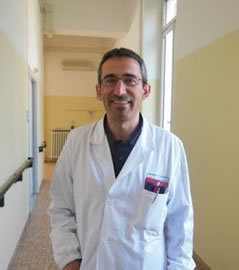 Davide Martorana, PhD
Davide Martorana, PhD
UNIVERSITY HOSPITAL OF PARMA, PARMA, ITALY
Study: Exome Sequencing in EGPA Patients
Institution: Diagnostic Department, Medical Genetics Unit, University Hospital of Parma, Parma, Italy
Award: $48,000, two-year study
Summary: Eosinophilic granulomatosis with polyangiitis (EGPA) is a multisystem disorder, belonging to the small vessel anti-neutrophil cytoplasmic antibody (ANCA)-associated vasculitides (AAVs). EGPA is defined as an eosinophil-rich and granulomatous inflammation often involving the respiratory tract, and necrotizing vasculitis predominantly affecting small to medium-sized vessels, associated with asthma and eosinophilia.
EGPA incidence is of 0.5–6.8 new cases/year per million populations, whereas its prevalence is 10.7–13 cases per million populations. The disease mostly affects subjects between 40 and 60 years old and the mean age at diagnosis is 48 years.
EGPA pathogenesis is not well known. The disease is probably the result of a complex interaction in which genetically and environmental factors lead to an inflammatory response whose principal players are eosinophils, T, and B lymphocytes.
The Whole Exome Sequencing (WES) test is a highly complex test that is newly developed for the identification of changes in a patient’s DNA that are causative or related to their medical concerns.
The exome refers to the portion of the human genome that contains functionally important sequences of DNA that direct the body to make proteins essential for the body to function properly. These regions of DNA are referred to as exons. It is known that most of the errors that occur in DNA sequences that then lead to genetic disorders are located in the exons. Therefore the WES test is thought to be an efficient method of analyzing a patient’s DNA to discover the genetic cause of diseases or disabilities.
In contrast to current sequencing tests that analyze one gene or small groups of related genes at a time, the WES test will analyze the exons or coding regions of thousands of genes simultaneously using next-generation sequencing techniques.
Specific aims of this study will be to develop newer potential EGPA diagnostic and prognostic biomarkers by exome sequencing and computational modeling, clinical subset stratification of EGPA patients on the basis of the genetic study and to ascertain the diagnostic-prognostic role of the whole findings.
The ultimate goal is the development of personalized medicine, in order to find rational means to optimize drug therapy, with respect to the patients’ genotype, to ensure maximum efficacy with minimal adverse effects and saving costs for the health system.
 Parameswaran Nair, MD, PhD, FRCP, FRCPC
Parameswaran Nair, MD, PhD, FRCP, FRCPC
MCMASTER UNIVERSITY, ONTARIO, CANADA
Study: Investigating Autoimmune Mechanisms Underlying EGPA
Institution: McMaster University in Ontario, Canada (co- investigators Manali Mukjerhee MD and Nader Khaladi)
Award: $50,000, one-year study
Summary: In many diseases, our own body produces antibodies directed against our own tissues and organs (autoantibodies), a phenomenon called autoimmunity. EGPA/Churg Strauss Syndrome is a serious rare ‘autoimmune’ condition that affects multiple organs, primarily lung, peripheral nerves, heart, gastrointestinal tract and skin. Therefore, the disease can manifest as a combination of symptoms, ranging from asthma, rash, fever, gastrointestinal bleeding, numbness of hands and feet and joint pains.
The condition has no cure and the different symptoms are controlled by a combination of powerful anti-inflammatory and immunosuppressant drugs, with severe side effects. Hence, there is a need to understand the underlying mechanisms of the disease to improve patient management and cure. Autoantibodies against a type of white blood cells called neutrophils (usually associated with infections) which particularly target ‘myeloperoxidase’ (MPO), is seen in 40% of the EGPA patients presenting with severe respiratory (asthma) and heart complications.
However, the disease as obvious by its name is characterized by an increase of eosinophils in blood and airways. The reason for this paradigm is not known. Eosinophils are a different kind of white blood cells that exclusively release ‘eosinophil peroxidase’ (EPX), a similar compound to MPO.
In this study, we propose to determine the presence of antibodies against MPO, their relation to severity of the disease and a possible involvement of EPX in the underlying autoimmune mechanism. This novel idea has therapeutic implications in that these autoantibodies may determine the severity of disease and allow us to better manage and treat these patients.
Educational and Professional Standing
After obtaining his medical degree (MBBS) from the University of Kerala in India in 1988, Dr. Nair trained in general and respiratory medicine at the University of Kerala Medical College Hospital in Trivandrum (with an MD for thesis on exercise-induced bronchoconstriction, Diploma in Tuberculosis, and National Board Certification in Respiratory Medicine (DNB), and Royal Sunderland and Royal Sussex County Hospitals in England (MRCP in General Medicine, 1996). He joined the faculty of Health Sciences of McMaster University in 2004 after training in Health Research Methodology, a clinical research fellowship and a PhD under the supervision of Professors Frederick Hargreave and Paul O’Byrne. He was elected a Member of the National Academy of Medical Sciences of India in 1993, Fellow of the College of Chest Physicians in 1999, Fellow of the Royal College of Physicians of London in 2003 and Fellow of the Royal College of Physicians of Canada in 2009 with certification in Internal Medicine and Respirology. In 2005, he was awarded the Ann Woolcock – American Thoracic Society prize for excellence in Asthma Research.
Research Interests
Dr. Nair’s research focuses on developing and applying non-invasive measurements of airway inflammation in the treatment of asthma and COPD, particularly in patients with difficult-to-control and prednisone-dependent asthma. His laboratory characterizes the types of bronchitis in airway diseases using measurements in sputum, develops novel biomarkers in sputum, identifies mechanisms of bronchitis and explores novel targeted therapies of bronchitis. He directs the AllerGen National Centre of Excellence Clinical Investigators Consortium for Severe Asthma and is a co-investigator of the Canadian Respiratory Research Network funded by CIHR.
 Lindsay Lally, MD
Lindsay Lally, MD
HOSPITAL FOR SPECIAL SURGERY, NEW YORK
Study: Rho-kinase Activity in Large Vessel Vasculitis
Co-Investigator: Robert Spiera, Director, Scleroderma and Vasculitis Center, Hospital for Special Surgery
Institution: Hospital for Special Surgery, New York, New York
Award: $50,000 one-year study
Summary: Rho/Rho kinase (ROCK) are a group of proteins involved in regulating blood vessels. In a small pilot study, Lally et al found increased levels of ROCK in the temporal artery biopsies of patients with GCA compared to patients without GCA. The higher levels of ROCK were seen even in biopsies that were negative by routine conventional analysis of the tissue. The team will look at a larger number of biopsies to see if staining for ROCK activity is useful in enhancing the diagnostic potential in negative biopsies, and if this may be a new therapeutic target. The findings may help identify patients who have GCA despite a negative biopsy for vessel inflammation, and prevent patients without GCA from getting unnecessary treatment with high doses of corticosteroids. ROCK may also represent a pathway that has not yet been extensively explored in inflammatory vascular disease. The funding enables Lally to move forward with this important project quickly.
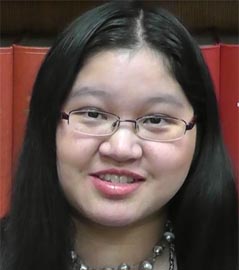 Kim Liang, MD
Kim Liang, MD
UNIVERSITY OF PITTSBURGH, PENNSYLVANIA
Study: Microbubble Contrast-Enhanced Vascular Ultrasonography: A Novel Method of Detecting Large Vessel Vasculitis?
Institution: Division of Rheumatology and Clinical Immunology, University of Pittsburgh, Pennsylvania
Award: $50,000, one-year study
Monitoring disease activity is crucial for effective patient care and better outcomes, yet a key unmet need is the ability to differentiate active vasculitic disease activity from vessel damage in patients with large vessel vasculitides (LVV), like giant cell arteritis and Takayasu arteritis. In LVV, the inflammatory process appears to begin at the outer layer of the vessel’s blood supply, with inflammation and new vessel formation occurring.
Liang’s team uses microbubble-contrast-enhanced carotid ultrasonography (CU), a novel non-invasive imaging technique, to detect changes in inflammation and new vessel formation in the outer vessel layer. CU may be able to help distinguish between active vasculitis and damage in patients with LVV. Liang’s research will look at LVV patients with clinically active and inactive disease, and compare them to patients with rheumatoid arthritis and people with no history of autoimmune disease. The results could help physicians tailor long-term treatment in LVV patients.
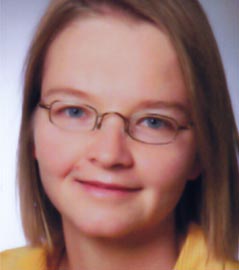 Susan Schinke, MD
Susan Schinke, MD
KLINIKUM BAD BRAMSTEDT, GERMANY
Study: Disease-specific dysregulation of miRNA in Granulomatosis with Polyangiitis (GPA/Wegener’s)
Institution: Department of Rheumatology and Clinical Immunology, The University of Lübeck, Lübeck, Germany
Award: $50,000, one-year study
Schinke began researching vasculitis while in medical school. Her MD thesis studied a special subgroup of ANCA directed against BPI, bactericidal/permeability-increasing protein associated with ANCA and chronic inflammation. Despite decades of research, scientists still don’t know the causes of ANCA and vasculitis. That intrigued Schinke and inspired her to investigate in vasculitis the regulation of genetic code by microRNA (MiRNA), an aspect of research that emerged only recently.
MiRNA shows that the genome we are born with is not a fixed setting. Gene expression can be profoundly changed by regulatory processes such as miRNA,” she explains. “MiRNA are influenced by environmental factors and therefore might explain the development of autoimmunity better than genetic or epidemiological studies that until now have not been able to explain why vasculitis develops in some patients and not in others. I hope to find a distinct pattern revealing a specific dysregulation of miRNA that only occurs in GPA patients–and not in healthy people. Hopefully this will give a hint to what causes this granulomatous and necrotizing vasculitis.”
The VF grant will help Schinke quantify miRNA expression in a set of GPA tissue samples and sera. This is essential for further study and will be the basis for future development of miRNA- based therapeutic interventions.
“For young researchers with new ideas the VF grant allows us to transfer these ideas into practice without being established in the researcher community with a high-ranked publication,” Schinke says. “This is so essential in order to generate the first results further studies can be based on and research can continue.
 Carolyn Thorpe, PhD, MPH
Carolyn Thorpe, PhD, MPH
UNIVERSITY OF PITTSBURGH, PENNSYLVANIA
Study: Impact of Healthcare Utilization and Informal Caregiving for Primary Systemic Vasculitis: A National Perspective
Institution: Pharmacy and Therapeutics, School of Pharmacy, University of Pittsburgh
Award: $99,920, two-year study
Individuals with systemic vasculitis (SV) require significant formal healthcare services and rely on family members and friends to provide informal caregiving support. Yet very little is known about patterns of healthcare utilization and costs among SV patients, or how family and friends are impacted by serving as informal caregivers to SV patients. Characterizing the burden of formal and informal care for SV from the perspectives of patients, family members, and the U.S. healthcare system is critical to raising awareness of the illness among policy-makers and garnering additional resources to support those affected by it.
This study proposes to provide such data through three specific aims:
Aim 1: Using 2010 data from the Healthcare Cost and Utilization Project – Nationwide Inpatient Sample, produce national estimates of annual utilization, costs, and outcomes of hospitalizations (i.e., number of discharges, length of stay, overall costs, and patient mortality) for all patients with SV in the U.S., and characterize variations in utilization, costs, and outcomes by patient, stay, and hospital factors.
Aim 2: Using 2010 claims and enrollment data from the Centers for Medicare and Medicaid Services (CMS), describe annual utilization and costs across the full range of health care services required to treat patients with SV who are enrolled in fee-for-service Medicare in the U.S. and characterize variations in costs and mortality by patient socio-demographic, clinical, and geographic factors.
Aim 3: Using online surveys and validated measures with SV patients, family members, and friends, describe the nature and impacts of informal caregiving (physical, emotional, social, and financial) for SV and examine predictors of greater burden.
This research will provide preliminary data for future federal grant applications, including further studies of variation in treatment for SV, comparative effectiveness of SV treatments, and development of psychosocial interventions to better support SV patients and their loved ones.
Dr. Thorpe will work with co-investigators Joshua M. Thorpe, PhD., MPH, University of Pittsburgh, and Delesha M. Carpenter, PhD, MSPH, Susan L. Hogan, PhD, MPH and Julie G. McGregor, MD., University of North Carolina.
The VF Research Program is funded by donations and is the largest private funder of research on vasculitis, granting more than $1-million to researchers around the world. Because of VF-funded vasculitis research, new and improved treatments and a greater understanding of vasculitis have increased the life expectancy for patients and improved their quality of life.

Carola Vinuesa, MD, MSc, PhD
AUSTRALIAN NATIONAL UNIVERSITY, AUSTRALIA
Study: The Role of micro RNA in a Novel Mouse Model of Vasculitis
Institution: John Curtin School of Medical Research, The Australian National University, Canberra City, Australia
Co-investigators: Giles Walters, MD, Simon Jiang, MD, and Alvin Pratama
Award: $50,000, one-year study
While researching how gene mutations lead to autoimmune disease, Vinuesa and her team discovered that mice carrying mutations in two genes of the same family spontaneously develop medium- to large-vessel vasculitis. Mouse models of spontaneous medium- to large-vessel vasculitis are rare, and understanding how these mice develop vasculitis will hopefully translate into how these genes, and the immune cells they affect, can be targeted to improved management of vasculitis.
For researchers Vinuesa’s work may provide an important step in understanding how interactions between the limbs of the immune system drive the vasculitis disease process. The new mouse model of spontaneous vasculitis may offer new insights into how T cell abnormalities, changes in a specific microRNA, and post transcriptional regulation of expression of genes encoding autoantigens that are a central feature of human vasculitis, lead to severe disease. The grant provides essential support in driving an exciting discovery forward.
 Susanne Benseler, MD, MSCE, PhD
Susanne Benseler, MD, MSCE, PhD
ALBERTA CHILDREN’S HOSPITAL, CALGARY, CANADA
Study: Development of a uniform histology scoring systems for Small Vessel CNS Vasculitis in adulthood and childhood
Institution: The Hospital for Sick Children, University of Toronto
Award: $40,128.10, one-year study
Benseler was inspired to study CNS vasculitis in pediatric patients after seeing previously healthy children present with severe neurological deficits including seizures, stroke, loss of vision of speech, inability to concentrate and more devastating symptoms. “Until about 10 years ago, brain vessel inflammation, or CNS vasculitis, remained unrecognized and untreated,” she says. “Children often died of their vasculitis without anybody making the diagnosis while they were alive.”
She began looking for a way to discover the underlying disease more quickly, reducing negative impacts and increasing quality of life.
“The mean age of a child with CNS vasculitis is 10, so an early diagnosis can alter their lives immensely,” Benseler explains. “If we can start treatment earlier and make it more tailored, chances of long-term brain damage are increasingly low and patients have a chance to recover completely and return to the life they lived before.”
Her team is developing a standardized approach to use the most reliable tests to expedite and confirm diagnosis and prevent permanent brain injury..
“This grant will help us to identify what is specific and instrumental for the diagnosis of CNS vasculitis on brain biopsy. New tests will help to identify possible new targets for treatment, which will be more targeted with fewer side-effects.”
 Paul Brogan, BSc, MBCHB, MRCPCH, MSc, Ph.D., FRCPCH
Paul Brogan, BSc, MBCHB, MRCPCH, MSc, Ph.D., FRCPCH
INSTITUTE OF CHILD HEALTH, LONDON, UNITED KINGDOM
Study: Circulating microparticles as therapeutic targets of plasma exchange in antineutrophil cytoplasmic antibody (ANCA) associated vasculitis
Institution: UCL Institute of Child Health and Great Ormond Street Hospital NHS Foundation Trust, London, England
Award: $99,206, two-year study
Inspired by a patient whose Microscopic polyangiitis was diagnosed too late, Brogan began studying ANCA vasculitis and other forms of vasculitis in children in 1997. His work centers on the novel biomarkers contained within the “blood dust”, which could be targets for therapeutic plasma exchange.
“We now know that ANCA cause little pieces of white blood cell ‘shrapnel’ to be released when they bind to neutrophils,” he explains. “In test tube experiments these neutrophil microparticles do bad stuff to endothelium, causing it to be activated and sticky and encouraging more white blood cells to bind, amplifying the vasculitis. We also know that these microparticles may contribute to blood clotting, and are found at higher levels in the blood of children who go on to have thrombotic complications of vasculitis.”
Brogan’s study will determine if this is also true in patients with ANCA vasculitis, and if removing the “shrapnel” by plasma exchange improves patient outcomes. He hopes his study will help identify which blood parameters are most important to remove to achieve disease control.
VF grants help clinician scientists like Brogan who are working at the interface of science and clinical practice for rare diseases.
“It undoubtedly facilitates the flow of knowledge from benchside research to the clinic for patient benefit,” he says. “This sort of support is essential to further our knowledge of such rare diseases.”
 Ritu Chakravarti, PhD
Ritu Chakravarti, PhD
CLEVELAND CLINIC, CLEVELAND, OHIO
Study: To Understand the Role of 14-3-3 In Giant Cell Arteritis (GCA)
Institution: Cleveland Clinic Lerner Research Institute, Cleveland, Ohio
Award: $49,000, one-year study
Chakravarti’s interest in GCA is simple: It is the most common form of vasculitis where the causative agent is not known.
Her research studies the agent causing inflammation of the aorta that manifests as GCA and affects 1 in 500 adults in America. The current therapy primarily uses steroids to suppress immune function causing significant morbidity.
“We hope that our results will facilitate early detection and better treatments for GCA patients,” Dr. Chakravarti says. “Our proposed work is the first step in identifying the causative agent and we would continue to test specificity of known targets. We will possibly look for novel targets involved in the disease. The next big step would be to facilitate non-invasive test for the early detection of GCA.”
The grant will help Chakravarti build a research base and will facilitate generation of useful results.
“It’s a very important bridge needed to find novel direction and sufficient data needed to develop future therapeutics,” she says.
 Sharon Chung, MD
Sharon Chung, MD
UNIVERSITY OF CALIFORNIA – SAN FRANCISCO
Study: Exome sequencing in granulomatosis with polyangiitis (GPA/Wegener’s)
Institution: Division of Rheumatology, University of California, San Francisco
Award: $50,000, one-year study
Sharon Chung became interested in researching vasculitis while caring for patients with GPA and other vasculitis diseases during her internal medicine residency at Johns Hopkins University. “I was fascinated by how these diseases could have so many different manifestations, and how the underlying trigger for these diseases was unknown,” she notes. That prompted her to study the genetics of the disease, to see if she can identify genes and genetic mutations that predispose individuals to developing GPA in an effort to better understand how the disease develops. “Identifying genes that are associated with GPA can reveal biologic pathways that are important in developing this disease, and those pathways may provide novel targets for less toxic treatments and better diagnostic tests,” Chung continues.
Her proposed project is an advancement over current genetic studies, since she will be focusing on rare genetic mutations instead of the common genetic mutations that are usually studied. The VF funding is crucial the undertaking, but its patient network also is critical. Genetic research like this is completely dependent on patients who are willing to participate in genetic studies and provide DNA samples. “When more individuals participate, more powerful studies can be conducted, and thus, we are more likely to identify the genes involved in this disease,” she explains. “Participation in genetic studies is an easy, low-risk way of helping move research forward for these diseases.”
 Cornelia Weyand, MD, PhD
Cornelia Weyand, MD, PhD
STANFORD UNIVERSITY, CALIFORNIA
Study: Small molecule therapeutics in Giant Cell Arteritis
Institution: Division of Rheumatology, Stanford University School of Medicine
Award: $50,000, one-year study
For the last 15 years, Cornelia Weyand’s research has focused on large vessel vasculitis with a special emphasis on giant cell arteritis (GCA), which is caused by immune cells that invade and attack arterial wall cells. With her latest project, she hopes to pave the way for introducing a new class of therapies.
“In this study we will examine how the immune cells are activated in the first place; how they respond to activation and how immune activation translates into the injury in the blood vessel,” Weyand explains. The study gives special attention to a new type of immuno-modulatory drugs, called the JAK inhibitors, which can suppress cellular activation. Experiments will explore the potential of such new inhibitors as a new treatment approach in GCA.
The new therapies will be tested in a model system created by grafting human arteries into a mouse model and infusing the blood cells from the patients into the mouse. “Through this system we can create ‘GCA in a dish’, with real patient cells and real human arteries,” she explains. “Doing so with the cells from a specific patient, we can test how this patient would react to the therapy.”
The VF grant will allow investigators to do a pilot study to create the necessary first data set that helps direct further research. “Support that comes through the Vasculitis Foundation is critical in securing that research programs can continue their work,” she concludes.
 Luqmani Raashid, DM, FRCP
Luqmani Raashid, DM, FRCP
UNIVERSITY OF OXFORD, UNITED KINGDOM
Study: Classification and Diagnostic Criteria in Primary Systemic Vasculitis
Institution: UK Department of Orthopaedics, Rheumatology and Musculoskeletal Science, University of Oxford, Oxford, United Kingdom
Award: $99,728, two-year study
Vasculitis is group of diseases where inflammation of blood vessels is the common feature. Patients typically present with fever, fatigue, weakness and muscle and joint aches. These symptoms are very common among many different diseases, not just vasculitis. A clustering of other symptoms, physical examination findings, blood tests, radiology and biopsy help make the diagnosis. There are currently no criteria to help doctors make a diagnosis of vasculitis when a patient presents with these non specific symptoms and they are reliant on previous experience and disease definitions. One of the aims of this project is to develop diagnostic criteria for 4 of the vasculitides (Wegener’s granulomatosis, microscopic polyangiitis, Churg-Strauss syndrome and polyarteritis nodosa). We will do this by studying a large group of patients with vasculitis and comparing them to a large group of patients that present in a similar way, but do not have vasculitis. By comparing the 2 groups we will create a list of items to differentiate between vasculitis and ‘vasculitis mimics’.
We also aim to update the current classification criteria. Classification criteria are used to group patients into different types of vasculitis, once a diagnosis of vasculitis has been made, and are useful for studying patients in clinical trials with similar or identical diseases. The current classification criteria (American college of Rheumatology 1990 criteria) were developed 20 years ago, before the availability of some important diagnostic tests (e.g. ANCA), and are now not consistent with some of the current disease definitions. Therefore to progress future research in vasculitis, it is important that the classification criteria are updated. We will recruit 260 patients with each of the 4 types of vasculitis and compare them with 780 controls, in order to determine the optimal combination of symptoms, signs and investigations that classify each person into the appropriate group.

